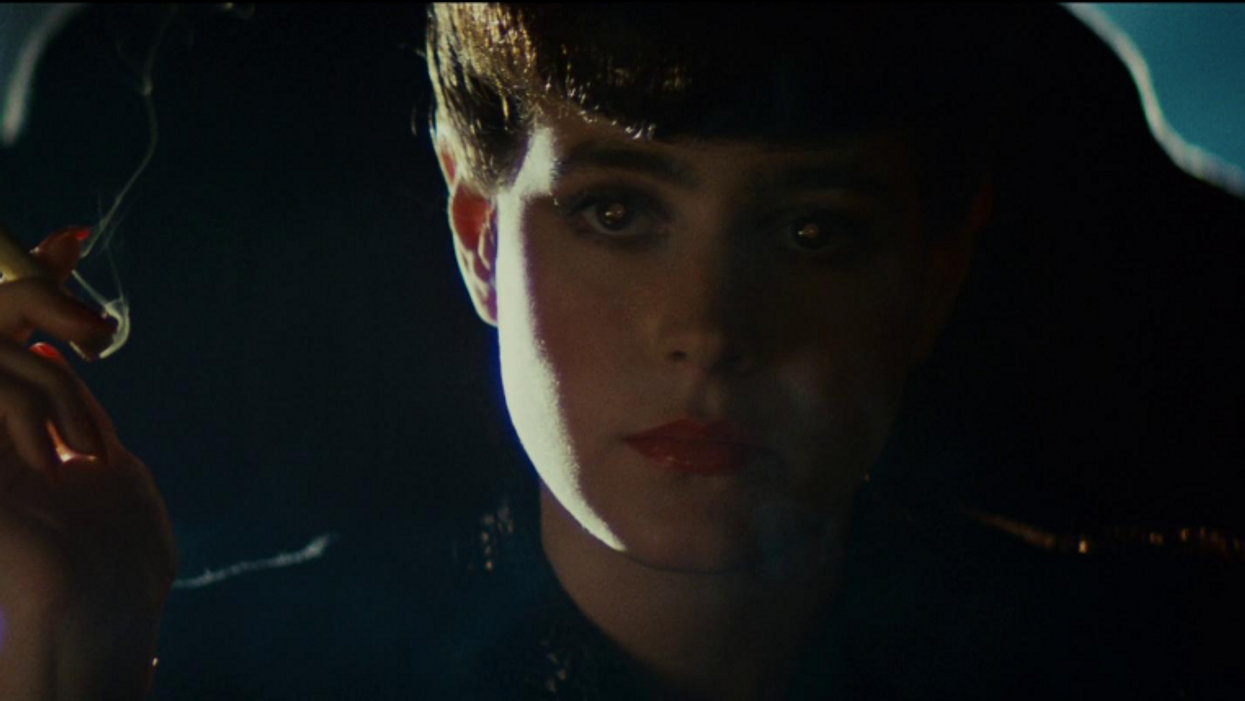Watch: Breaking Down the Amazing In-Camera Effects of 'Blade Runner'
Cinematographers Nic Knowland and Geoff Boyle analyze Ridley Scott's 'Blade Runner' and explain the craft behind the imagery.

Ridley Scott's Blade Runner is one of the most beloved sci-fi films ever made. The film is celebrated for its story (courtesy of Philip K. Dick's Do Androids Dream of Electric Sheep?), performances from Harrison Ford, Sean Young and Rutger Hauer, and, of course, the cinematic vision of Neo Tokyo, a futuristic megalopolis brought to life through the art direction of David Snyder and the cinematography of Jordan Cronenworth.
In the video below from CookeOptics TV, veteran DPs Nic Knowland and Geoff Boyle break down their favorite moments from the classic film, expounding on the techniques used to bring the world of 2019 (which was, in 1982, slightly further than the six months away it is now) to life on the big screen.
A Lamp on a Dimmer
In this famous scene where Deckard interrogates Rachel, Boyle discusses the way that the famous close-up of Sean Young was lit. They reference an old article from this very website where we had gone into a reverse-engineer of the shot, although according to Geoff Boyle, the actual lighting was simpler than had been proposed.
Boyle explains that the style was common to RSA Films (the Scott Bros. commercial production company founded in 1968) and involved a "mega backlight, and then a piece of poly to bounce back...that's it, you're lit, nothing complicated at all."
Regarding Sean Young's famous eye-light, Boyle explains that it was achieved through the use of Porta-Prompt, "a 45-degree semi-silvered mirror" and a light on a dimmer. "You put the lamp here on a dimmer, and it reflects off the front into the eyes...it gives different colors in it and what you do is when you want our eyes to glow, you just dim this light up in her eyes...no post, she's done in-camera."
It's an amazing (and surprisingly simple) explanation for a shot of exceptional beauty. He explains further that this approach, "of hard backlight and bounce was used in a lot of commercials in the late 80s and early 90s."
An Influential Film in Terms of Light
Looking at the infamous scene where we're introduced to the Voight-Kampff Test and meet Leon, the killer replicant, Nic Knowland remarks that "I'd be pretty happy if I'd done the lighting here. The scale, the atmosphere...it's all so textured and edged."
Knowland discusses the use of anamorphic lenses in the scene: "You can see the texture...the highlights are not quite round."
In Knowland's opinion, the film "gave us permission, in a way, to be bolder with our work. It's such an influential film, in terms of light."
You Can Try Things Out
The cinematographers also point out the influence of television commercials on the film's looks, referencing a 1980s ad for Barclays bank which was directed by Ridley Scott and features many of the same techniques used in Blade Runner.
"I think [Scott] developed a lot of that look on commercials," says Knowlands, "and he had lots and lots of money and time...I think that's one of the useful things about commercials, you can try things...It might have taken quite a lot of time, but once you've got it, it's in your pocket as a tool."
This video, with its insights from two master cinematographers and contemporaries of Scott, is invaluable and full of useful information, not only for today's working cinematographer but for fans of the film as well.
Source: CookeOptics TV













